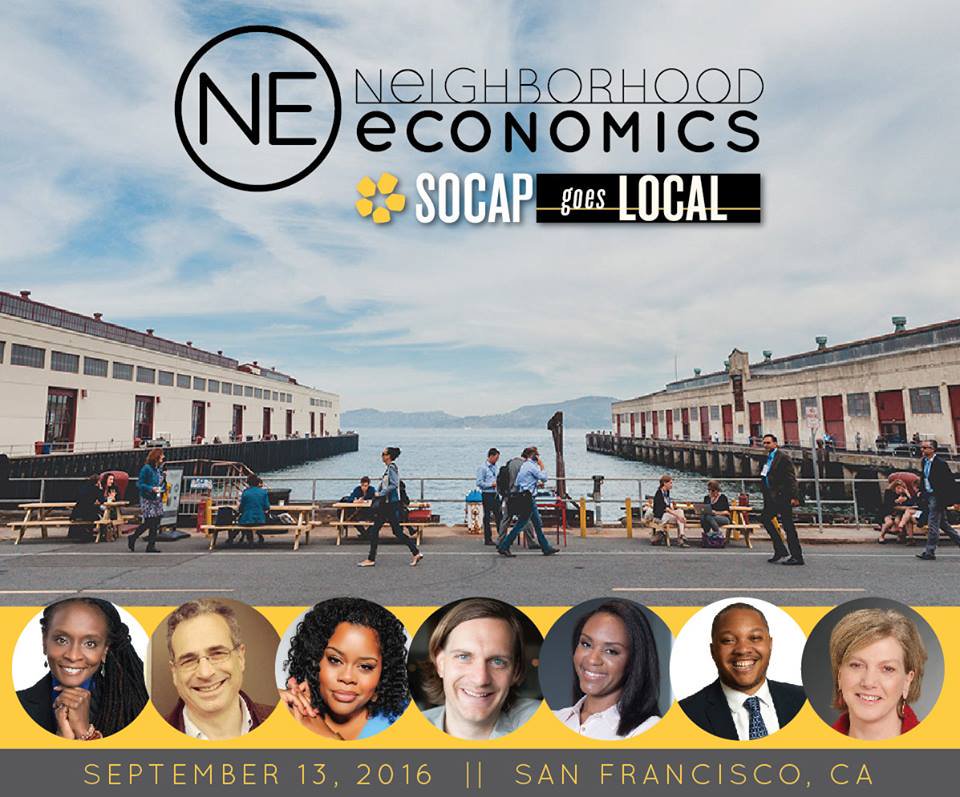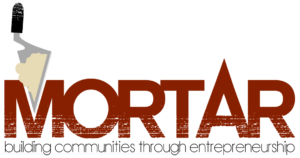Innovators of neighborhood economics were the lead-in of this year’s social capital (SOCAP) conference.
SOCAP is the world’s largest conversation accelerating the alignment of money and meaning as a driving force for positive social and environmental change. Over the years, there’s a key theme they’ve been nurturing within the conference’s menu: local investments … community capital … neighborhood economics. The SOCAP team has also mounted separate, stand-alone Neighborhood Economics conferences, thus far in Louisville and Cincinnati. This year, SOCAP went local and began its four-day run in San Francisco with a symposium from 8AM–4PM, entirely devoted to … neighborhood economics.
The first segment spotlighted stories from pioneers on this leading edge: Derrick Braziel, co-founder of Mortar; Rodney Foxworth, Founder/CEO, Invested Impact; and Laurin Hodge, Executive Director of Mission: Launch. Let’s zero in on Mortar.
MORTAR: Building Resilient Communities Through Innovative Entrepreneurship
We Are Mortar was conceived by Allen Woods, Derrick Braziel, and William Thomas II, three young African American gentlemen living in Cincinnati, each with background launching businesses, and who wanted to use their talents, experiences, and insights to create and inspire change. Positive change — rather than gentrification, that could engage traditionally marginalized long-term residents. So, instead of complaining about what wasn’t, they decided to create what they wanted to see. They focussed on Cincinnati’s oldest neighborhood, Over-the-Rhine. Today, OTR exhibits some of the greatest disparity between high- and low-income households in America. Hence the name “mortar”: filling the gaps.
Mortar provides one-on-one mentorship for budding entrepreneurs — and then a pop-up location, providing the space and opportunity for testing out their project in public. (If such pop-ups are the brick, the people are the mortar.) The age of students, thus far, spans 23 to 66, from middle school ti college grad. More commonly, 70% of enrollees have been women, and 85% African Americans.
If all that sounds visionary, consider too how they came to their location: someone offered them space. For an organization of just three people, it might seem crazy to commit to a 10,000 square-foot space for a pop-up shop. But seven dumpsters full of trash, and thousands of dollars later, it has capacity for not only vendors but also an art gallery and a film room. Their graduates include artists, boutiques, chefs, clothiers, designers, chefs, social enterprises, and more. Moreover, they’ve grown from receiving 20 applications in their first round to 70 in the most recent round.
Mortar is scaling, looking to expand into neighboring north Kentucky. They’re also creating a national model for spaces and placemaking – neighbors making businesses where they live. In so doing, they’re realizing one of the core tenets of the American spirit: the power of a dollar and a dream. And through their efforts neighborhood economics is moving from being a background theory to a practice very much in the foreground of our well-being.
To use a less industrial analogy than mortar, mighty oaks from little acorns grow. And, as our fellow blogger Ruth Glendinning reminds us, change, like a tree, begins from the roots up.
Based on the depth of broad diversity and high calibre of the neighborhood economics presentations at SOCAP this year, plus the keen interest and interaction of attendees, sufficient cause seems evident for SOCAP to mount a three-day Neighborhood Economics conference next year, possibly to take place in Washington, DC.
This post, meanwhile, is the first of a series covering highlights of SOCAP going local.


